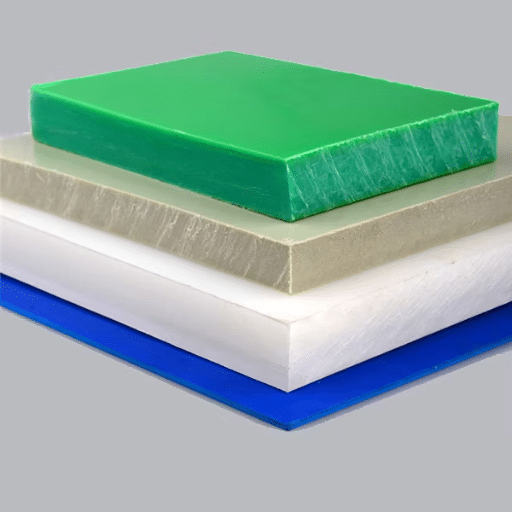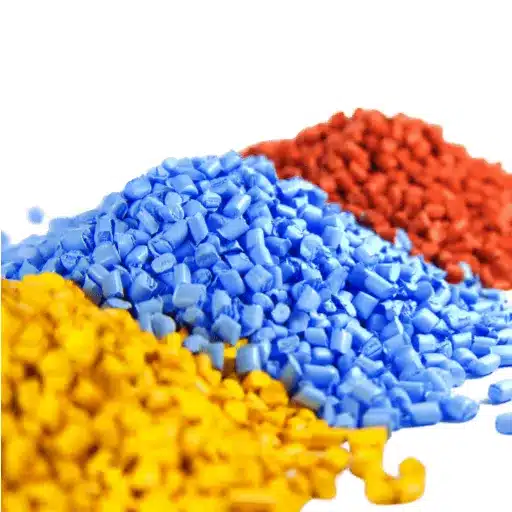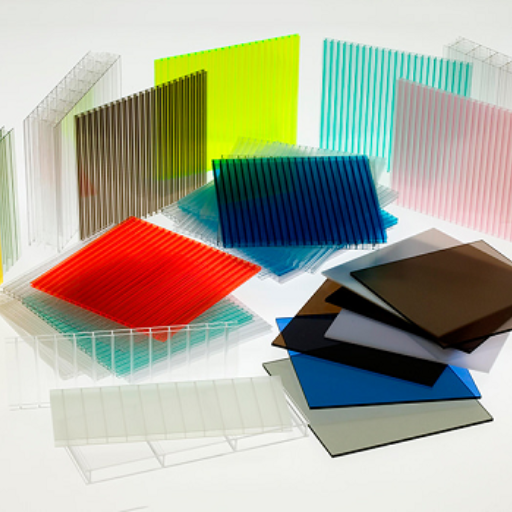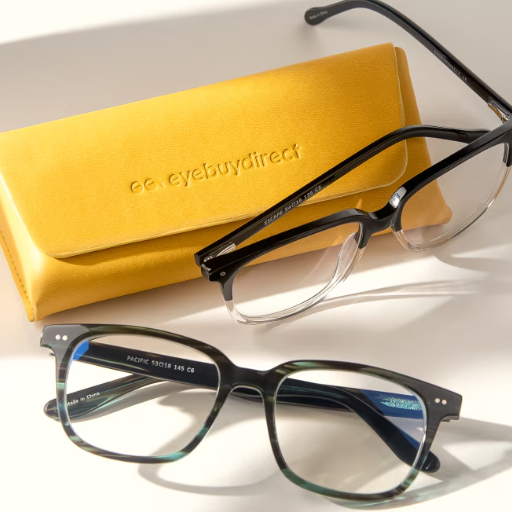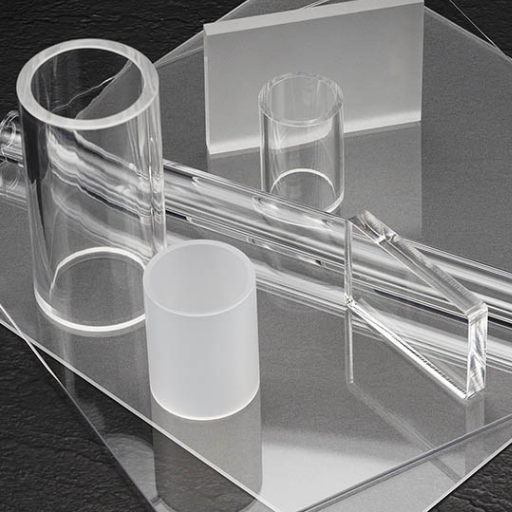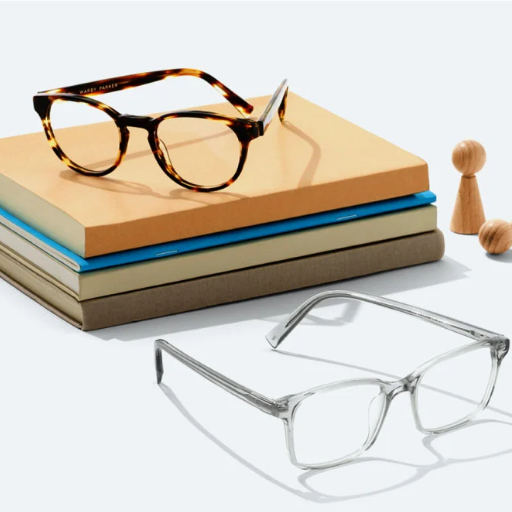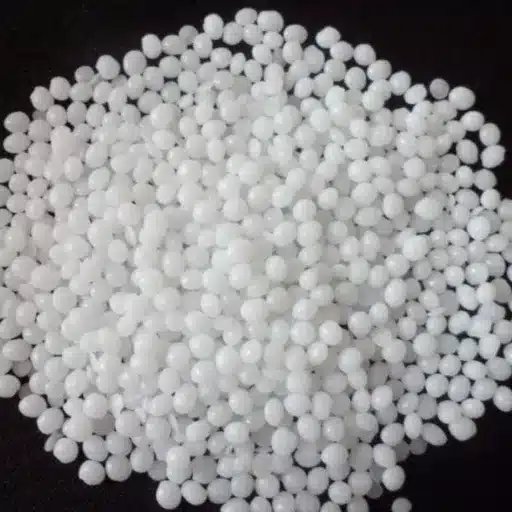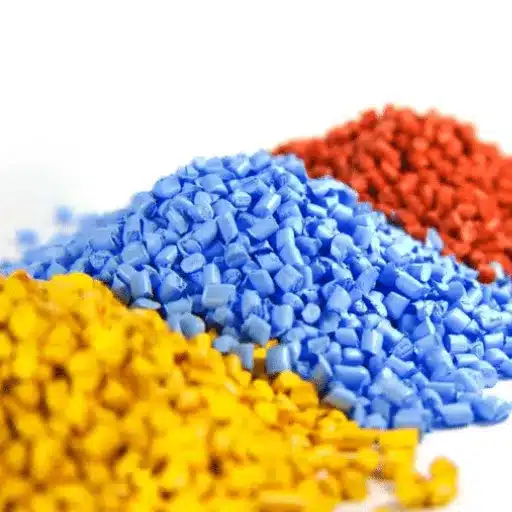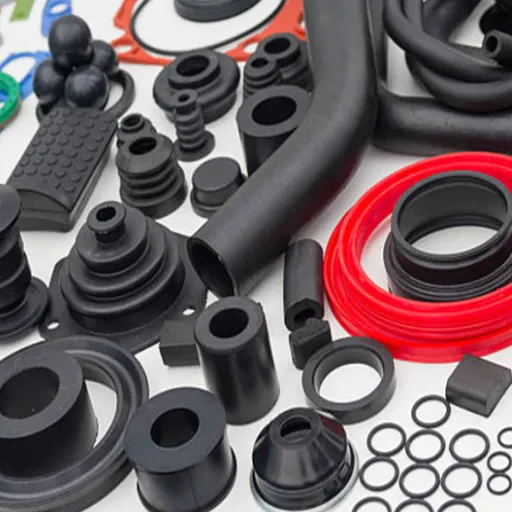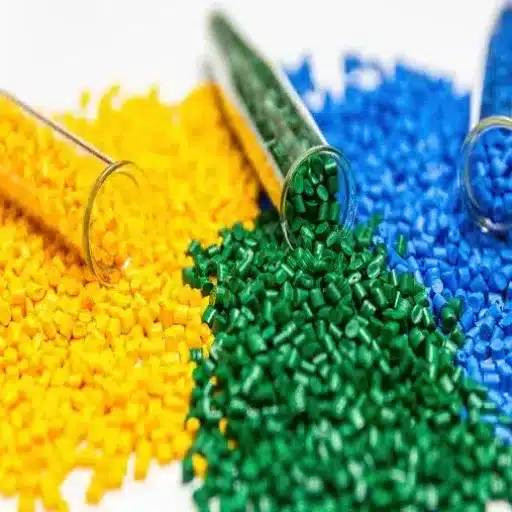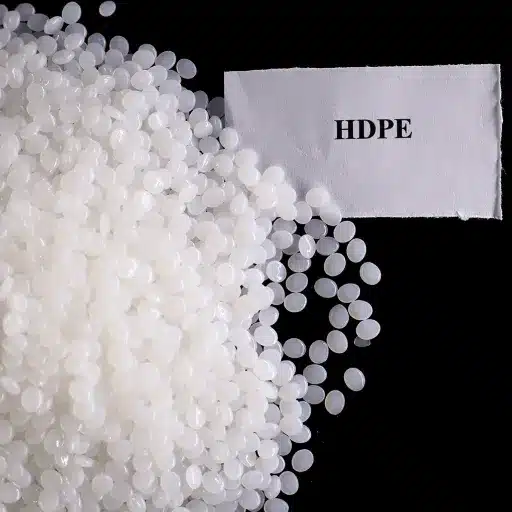In the context of spectacle lens selection, another factor that is relevant is your lifestyle. It goes without saying that the lens material would have a great influence on such factors as comfort, ease of usage and longevity. Standard and polycarbonate lens materials are the two common lenses made for glasses, and each of these material has some unique advantages that are suitable for varying lifestyles. This text tries to make a comparison of plastic versus polycarbonate lenses and their use, noting the possibilities they offer as well as the restrictions regarding both types of lenses and how they fit. If you need cost-saving, the antiglare coatings, or durability, the knowledge of the difference in characteristics between the two materials will help you decide correctly for your work or daily activities.
Overview of Lens Types
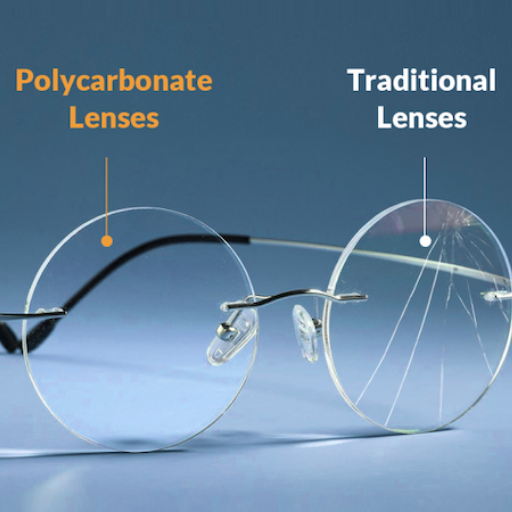
Plastic and polycarbonate lenses are the most common types of goggles and each type has its pros and cons for different uses.
- Plastic Lenses: Such lenses, which are made from CR-39 material, are known as plastic lenses. This is because they are quite affordable, lightweight, and of superb optical quality. They are usually preferred for their lenses other than other types. Because of the benefits of not being expensive they are used in many common designs. Nonetheless, their durability is compromised as a result, and they are markedly susceptible to damage owing to wear and grinding.
- Polycarbonate Lenses: Known for its resilience, polycarbonate lenses are designed to withstand more impact, hence more suited to children, sportsmen and ladies with active lifestyles. There are certain brands that additionally incorporate UV protection inside their lens to protect your eyes from damage caused by the sun. However, it is sometimes noted that there may be a lack of clarity in such lenses in comparison with optical lenses and they are costlier on average.
These two lens types have pros and cons which make the choice between them difficult and dependent on personal preferences, habits, the need to be protected, the available budget among other considerations.
What are Plastic Lenses?
A comprehensive and inexpensive choice in spectacles, plastic lenses exhibit good optical properties and can be utilized in various types of eyewear. They are usually made of CR-39, a particular type of plastic (copolymer), making their assembly much easier and lightweight. Lenses made out of this polymer are less resistant to impact compared to polycarbonate stereograph lenses and offer limited scratching. Nevertheless, these lenses are of better quality than polycarbonate, as the extra-thin coats help limit scratches. They can be worn daily but are less appropriate for activities with high intensity of impact or sports because they are not designed for heavy use. With changes in lens development, manufacturers have adopted better optical technologies in the development of plastic lenses. The use of UV Cured, Bleach, Scratch Resistance, and Hard Coatings, as well as photochromic lenses, allows different squared and rounded shapes to be made, instead of simply the available same elliptical design lenses and additional structures, increasing comfort and functionality for the end user. The selection of plastic lenses is typically made keeping in view the inclination for economy and for improved visual performance in eyes in non-demanding tasks.
What are Polycarbonate Lenses?
Polycarbonate lenses are a type of eyeglass material which are very resistant to impact and lightweight, and therefore are commonly used as safety goggles, sports goggles, and children’s eyewear. Developed for aerospace in the 1970s, polycarbonate started replacing glass in the optical industry due to its unbreakable properties and ease of manufacturing. These lenses are up to ten times more shatterproof than traditional plastic lenses, which outweighs standard protective equipment any day in the presence of rigors that involve eye care.
Polycarbonate 100% UV-coated lenses are another very appealing use for outdoor protection or for some fashion trends. Despite their thinness, this does not affect their ability to recommend an up-to-date optical performance. It helps to avoid behaviors and actions that are carried out near the eyes. Due to the need to improve the aesthetic appearance and reduce the bulkiness of the glasses, these lenses have a special purpose: to provide better optical flow than conventional lenses. Since the addition of anti-scratch and anti-reflection coatings is now possible in the production process, the parameters of large-scale application of polycarbonates are further expanded. The Abbe value is lower than that of other types of lens materials, hence it is important to note that some peripheral vision can suffer from chromatic aberration, although techniques are increasingly being developed to counteract this. Polycarbonate lenses are a more functional and convenient option for people who need sturdy but also lightweight eyewear.
Comparing Glass, Plastic, and Polycarbonate
|
Parameter |
Glass |
Plastic |
Polycarbonate |
|---|---|---|---|
|
Weight |
Heavy |
Lightweight |
Ultra-lightweight |
|
Durability |
Brittle; shatters easily |
Moderate |
High; impact-resistant |
|
Optical Clarity |
High |
Good |
Decent; slight aberrations |
|
Scratch Resistance |
Excellent |
Moderate |
Requires coatings |
|
UV Protection |
Requires coating |
Moderate; coating often added |
Built-in |
|
Thickness |
Thin |
Thicker than glass |
Thinnest |
|
Cost |
High |
Affordable |
Moderate-to-high |
|
Use in Safety Applications |
Rarely used |
Limited |
Widely used |
|
Heat Resistance |
High |
Low |
Low |
|
Environmental Impact |
Low recyclability |
Moderate recyclability |
Moderate recyclability |
Material Properties and Clarity
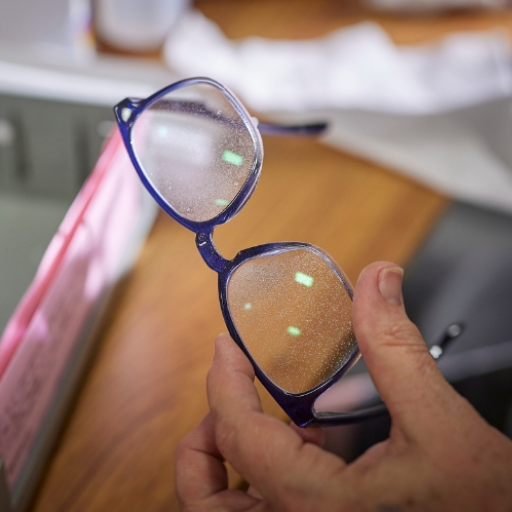
Where clarity and specific aspects of are interested in, several types of materials are absolutely suited to certain applications. It is often said, for instance, that glass is a material which guarantees an optimal optical quality, and which, furthermore, one can scratch without any fear as many times as one wishes on the surface. Therefore, glass is often used for precision work such as lenses or windows as it has exceptional optical clarity, it does not scratch, and it is also durable and reliable. Even though it is not as scratch-proof as glass, plastic can offer almost the same level of clarity when coated and, after drawing defects, is more durable, particularly where the component is meant for safety or bulked up. Over, the face of the plastic offers the trend of low fading one as the material is coated and the material has higher impact resistance. Among these, polycarbonate is distortion free and is well suited for impact, such as in safety equipment and protective barriers. All these qualities represent the inability of the material, of the used material, provided thereby speaking meanings the suggestion that appropriate material created by the properties of the respective usage.
Optical Clarity of Plastic vs Polycarbonate
Compared with many of the commonly used plastic materials, polycarbonate has very superior clarity. Thanks to transmission of light at a rate up to more than 90%, polycarbonate does not lose to glass in making clear views despite its lightness and strong build which sometimes is bulletproof. Another familiar transparent plastic, standard acrylic, is also famous for giving out clear vision but because of its lack of strength and toughness as compared to polycarbonate, it is often not suitable for high intensity use applications. Moreover polycarbonate’s resilience, or transparency, is an asset in that it can be used in outdoor settings as well as in industrial settings where damage from environmental conditions can lead to decay of standard plastics. These features cause polycarbonate to be preferred mostly when a structure, which is mostly visually transparent, is constructed and its employment for ensuring a said structure’s visual appearance prevents deformation.
Understanding Lens Material Composition
Modern designs for lens materials are developed these days to provide the best optical properties while being comfortable, lasting long, and being safe to use. Most of the lenses today use polycarbonate for the great impact resistance, and it is very lightweight, which makes it useful for all manner of protective eyewear for sports lenses or even for children’s glasses. The other popular material, which is also known as CR-39, is not as strong as polycarbonate and is very resistant to deformation; The only setback it has is that it lacks strength when compared to polycarbonate. Trivex, another material, yet to be introduced, has been developed to bridge the gap between polycarbonate and CR-39, providing lightweight, perfect vision and impact resistance.
Durability and Impact Resistance
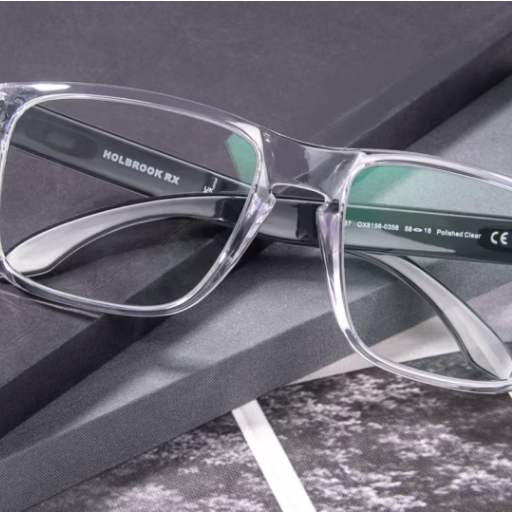
More structure, more functionality, and better materials are the trends followed by the all-progressiveness of the lenses where durability and protection against shock are prioritized among other considerations. High-grade lenses are built with high-quality materials like polycarbonate and Trivex to a considerable extent because of their toughness and the fact that they handle very high stress before they can break or crack. These materials are also relatively thin and cause very less fatigue on the users. There is always a treatment called a ‘scratch-resistant coating’ that these glasses obtain do its function as its name implies. All of these aspects make modern lenses ideal for everyday wear as well as for situations of difficulty or stress.
Scratch Resistance of Plastic and Polycarbonate
In the past, the invention of scratch-resistant technology for plastic and polycarbonate lenses has significantly improved the unfading feature of these lenses, which was damaging the impact of an item. Recently, scientists have been able to come up with advanced technologies to coat a lens using a new technology, where there are extremely thin plastic layers which form with hard plastic material. For example, the aim of anti-abrasive coatings is to produce high surface hardness that minimizes the chances of scratches due to reasons like collisions with other solid objects. Incidentally, according to an analysis performed by many, commercially available polycarbonate lenses treated with purpose–oriented scratch-resistant coatings demonstrate an increase in durability of up to 50% when compared to lenses that are untreated. These advances in technology help provide for both life and functional aspects that lenses not only remain functional but also can preserve and enhance optical quality even in the harshest strain.
Durability in Everyday Use
In modern times, advances in material sciences have come a long way in improving the efficiency of lenses in all aspects, including dimensional stability under adverse environments. For example, polycarbonate lenses are now designed to meet, or far surpass, certain resilience levels, sometimes up to ten times, as compared to a pair of regular glass spectacles, and still keep them lightweight and comfortable to wear. Besides, latest technology innovations, like, where nanoscale is used to coat the lenses, come along with adhesion mechanisms, which prevent lenses from scratches and fingerprints for a relatively long span of time. To prevent these unnecessary coatings, they are often formulated together with hydrophobic and oleophobic characteristics, to keep the environmental factors like water, dust and oils off the lenses. All the more these modifications enhance the effectiveness and the span of utilization of the lenses even under harsh normative loads.
Impact Resistance for Safety Glasses
Applications of Lens Types
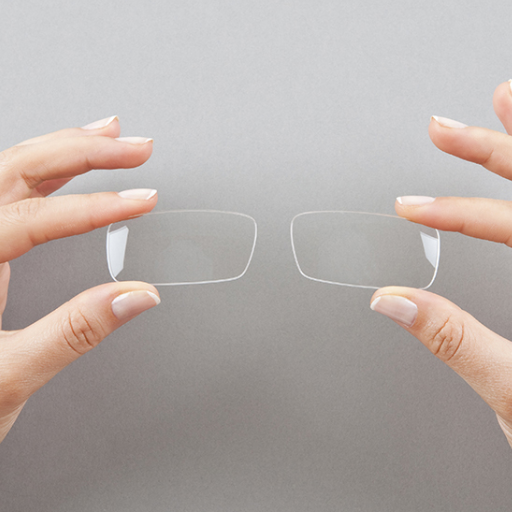
- Clear Lenses
Clear lenses are intended for indoor usage to provide accurate vision and shield against sill debris or other impacts. Such lenses are normally found in manufacturing, research and development, and craft industries.
- Tinted Lenses
Shaded lenses are meant to assist in lowering light effects and they are good for higher contrast tasks usually done outside such as construction, gardening etc.
- Photochromic Lenses
The abovementioned lenses can darken depending on the lighting conditions at the time of wearing them, thus not going out. This makes it easier for the workers to operate in both outdoor and indoor conditions.
- Polarized Lenses
Also, polarized lenses are effective in this regard, reduces the glare caused by ice, water, and other objects during driving or the performance of water-related occupations.
- Specialty Coated Lenses
Coated lenses such as antifog or antiscribe are necessary in areas with high humidity and when the eyewear will be worn in a dangerous situation such as the operation of a healthcare facility or an area striking food.
Each lens type is designed to address specific occupational challenges, ensuring safety and functionality tailored to the user’s needs.
Everyday Eyewear
The need for everyday eyewear is critical as people live in comfort designs that have a sense of style. Gone are the days when glasses used to be bulky with sharp cut edges. Modern designs will provide lightweight materials and designs that do not require heavy usage, hence they do not undermine one’s eyes, making it possible to carry out tasks that require vision. Photochromatic lenses have become useful, especially in optical applications for weather and dust. Wearing protective clothing along the rise of the popularity of Multi-Focal lenses due to digital addiction and other factors reduces the risk of myopic progression and symptoms of eye strain. All these point to the fact that even the everyday eyewear does not stand still and continues to develop towards allowing the full use and good health of one’s eyes in all environments one might be in.
Sports and Active Use
The current styles of eyewear produced for the active, sports audience often concentrate on the enhancement of user’s performance while no less important issues are business and individual practices. Lenses produced for active sports use are usually made out of polycarbonate or powerful Trivex plastics, which are not only resistant to impact but are also lightweight and therefore excellent for participation in high-energy activities. To prevent fogging, an anti-fog treatment can be added inside of the lens. Moreover, the availability of the advanced wrap around designs enabled safety anthropologists to design such busy frames that do not fall off the head, provide high visual coverage as well as a drastic peripheral vision for sportspersons. The spuriousness of reflected sunlight on water surfaces, snow and the internal surfaces of sports goggles was reduced, while this also had the effect of extending the level of effort that the user can undertake without tiring their eyes. In the past year, some sports sunglasses have been noticed discharging very dark to very light lenses which makes it easy to change conditions of light. All these aspects work together to promote performance enhancement not only in sports but in all kinds of activities.
Safety and Protective Eyewear
Safety and protective eyewear is one such area that has especially seen the improving technology over the past few years in order to meet the critical standards, as habitations require they be more durable, withstand shocks and blows, and be sufficiently comfortable to the user. Safety glasses, which are polycarbonate or trivex, are much more resistant to impact than ordinary glass or standard plastic and are compliant with ANSI Z87.1 with the equipment. Besides, many there models have employed antifogging and scratch resistant properties to improve n performance in wet environments and increase the durability of the product.
Finally, it should be clear that for most workers in sectors like construction, manufacturing, or health, protective gear can be made on the form of eyewear, almost all of which is intended to protect the face against the dust, liquids, sprays and or nuclear rays. Such as in medicine proper eyewear is referred to as safety goggles or lenses with side covers whose purpose is to protect against particulate infection. Also, safety risks have been minimized recently with use of new technologies such as UV protection and blue light filtering which takes care of eyesight folded with eye strain. Made with safety, convenience, and distinct fashion in mind, the modern protective eyewear adapts to suit most safety applications.
Cost Considerations
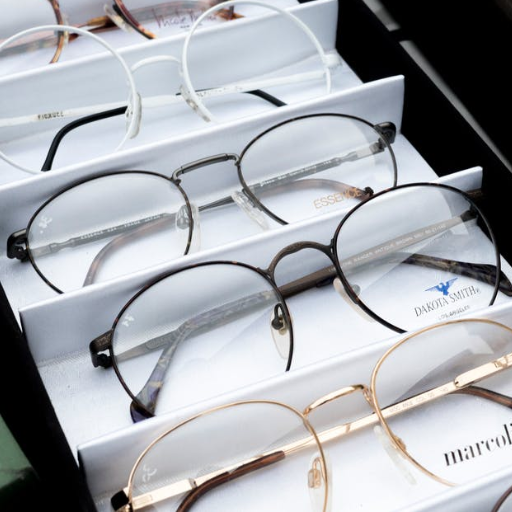
The prices of safety glasses are subject to materials quality, the degree of technological advancement, and the purpose of utilization. The basic models without those added features can be purchased at a price ranging from $10 to $30. The mid-range models, which contain UV devices and antifog, can be purchased between $30 and $80. The avoidance of ocular safety wear for such a range of markets as extreme sports, military use, or working with steam or hazardous chemicals, reaches even more than $100, due to intricate features such as adjustable bridge, attenuation of blue light, or springy glasses among others. When calculating the expenses, the protective equipment requirement should be matched to the ability of the safe working measures to perform efficiently.
Price Differences Between Plastic and Polycarbonate
The cost differences between plastic and polycarbonate lenses arise mostly from the differences in the materials composition, durability, and usage. Plastic lenses on the other end, good for low-impact activities, are made of CR-39 polymer or sometimes even similar synthetic materials and are more affordable, with costs ranging from $10-$50, depending on the brand, coatings, and other factors. The price of most of these lenses is therefore not a barrier to their purchase and use among people especially while working in such areas.
In contrast, polycarbonate lenses are toughened material characterized by its anti-shock, high strength and light characteristics, and their cost usually high. These lenses are in fact most preference for areas where an individual is mostly exposed to safety and protection measures like in industries or while playing sports. As a result, such lenses cost more, beginning at $30 in most cases and well over a hundred dollars for such applications as high-performance safety goggles or even prescription lenses with extra features such as anti-scratch or antireflect layers. The higher cost of these glasses goes with the technology used in making these lenses and their ability to provide more clarity and longer life in use in even harsher environments.
Value Ratio for Different Lifestyles
The value of optical materials like polycarbonate outweighs that of glasses, it depends on what lifestyle and usage one puts the material to, and what features the user may need in glasses. A person who lives a highly active lifestyle or has strenuous occupations, like athletes or construction workers, experiences higher returns if they purchase the expensive lenses because the qualities of polycarbonate make its use appreciated more than the cost. Such individuals have increased levels of safety provisions and can also reduce maintenance costs since longer-lasting materials are installed in them, thereby improving resonance and providing a cost-effective solution. However, in the case of office workers with low risk in the work environment they are, the purchase of polycarbonate lenses often results more from the convenience it offers and other optional features rather than protection from heavy eyes or visual damage.
Reference Sources
-
All About Vision: Plastic vs. Polycarbonate Lenses
- Key Points: Plastic lenses (CR-39) are lightweight, durable, and cost-effective but thicker and less impact-resistant than polycarbonate. They offer partial UV protection, which can be enhanced with coatings. Polycarbonate lenses are thinner, more impact-resistant, and provide 100% UV protection without additional coatings. However, they are prone to scratches and are more expensive.
-
Zenni Optical: Exploring the Differences Between Polycarbonate and Plastic Lenses
- Key Points: Polycarbonate lenses are lightweight, impact-resistant, and include built-in UV protection, making them great for active lifestyles. Plastic lenses are more affordable and offer better optical clarity but lack inherent UV protection and are less durable.
-
Revant Optics: Polycarbonate vs. Plastic Lenses
- Key Points: Polycarbonate lenses are highly impact-resistant, lightweight, and block 100% UV rays, but they are more expensive and prone to scratches. Plastic lenses are affordable, durable, and shatter-resistant but require additional coatings for UV protection.
Frequently Asked Questions (FAQs)
Q: What are the advantages and disadvantages of plastic lenses?
A: Plastic lenses, also known as CR-39 lenses, are lightweight and offer decent optical clarity. One of the main advantages of standard plastic lenses is their affordability, making them a popular choice for everyday eyewear. However, they do have their disadvantages, such as being less scratch-resistant compared to polycarbonate lenses. While plastic lenses provide good UV protection, they may not be as durable as other lens materials like polycarbonate and trivex. Understanding the differences between these materials can help you choose the right lenses for your needs.
Q: How do polycarbonate lenses compare to other lens types?
A: Polycarbonate lenses are known for their impact resistance, making them an excellent choice for safety glasses and active lifestyles. When comparing polycarbonate vs other lens types, such as plastic or glass lenses, polycarbonate stands out due to its lightweight nature. Unlike glass lenses, which can be heavier and more fragile, polycarbonate lenses are designed to endure tough conditions. They also often come with a scratch-resistant coating, enhancing their durability. For those requiring high-index lenses for strong prescriptions, polycarbonate offers a thinner and lighter option.
Q: Are there any specific uses for polycarbonate and trivex lenses?
A: Polycarbonate and trivex lenses serve specific purposes due to their unique properties. Polycarbonate lenses are often recommended for children and active individuals because of their high impact resistance and built-in UV protection. Trivex lenses, while also lightweight and impact-resistant, provide superior optical clarity compared to polycarbonate, making them an excellent choice for high-prescription eyewear. When choosing between these lens types, it’s essential to consider your lifestyle needs and preferences, as both offer significant advantages over traditional plastic lenses.
Q: What should I consider when choosing the right lenses for my eyewear?
A: When selecting lenses for your glasses, consider factors such as durability, weight, and optical clarity. Plastic vs polycarbonate and trivex lenses can significantly impact your overall comfort and vision quality. For everyday use, standard plastic lenses may suffice, but if you lead an active lifestyle, polycarbonate or trivex lenses would be a better fit due to their impact resistance. Additionally, if you have a high prescription, high-index lenses can provide a thinner profile, making them more comfortable to wear. Ultimately, understanding the differences between lens materials will help you make an informed decision for your next pair of glasses.
Q: What is the impact resistance of plastic lenses compared to polycarbonate lenses?
A: Impact resistance is a crucial factor when considering lens materials. Polycarbonate lenses are known to be more impact-resistant than plastic lenses, making them suitable for safety glasses and sports eyewear. While standard plastic lenses can withstand everyday wear, they are more prone to cracking or shattering under high-impact conditions. Polycarbonate lenses also provide a level of UV protection, adding another layer of safety. Understanding the impact resistance of different types of lenses can help you determine which option is best for your lifestyle and activities.






